As urban areas large and small continue to attract jobs, residents, workers, and visitors, their transportation systems demand ever more upkeep and expansion. For some, the gap between need and the means to pay for it is a bridge too far.
New York’s Metropolitan Transportation Authority projects a budget deficit of $467 million in 2020, rising to nearly a billion dollars by 2022. The agency is looking at a five-year capital investment plan that could reach $60 billion. Chicago needs $30 billion to fund priority projects.
Other agencies need funds for expansion as they build-out new light rail, streetcar, or commuter rail lines. And all are confronting dramatic changes: adoption of new technologies including integrated and mobile fare systems; accommodating shared and automated vehicle networks; and the evolution of transportation toward the concept of mobility-as-a-service.
“We are trying to spread limited dollars far too thin,” says Brittney Kohler, program director of transportation and infrastructure at the National League of Cities. “The demand isn’t going to go away.”
Despite the handwringing over loss of riders to Uber and Lyft, transit ridership has grown 30 percent since 1996. Agencies are now handling 17 billion more passenger-miles annually. And 47 percent of public transit trips are now by rail.
Underlying this is an urban vortex sweeping in economic activity and vitality. Metropolitan areas create 95 percent of net new jobs. Nearly a quarter achieved double-digit employment growth since the 2008 to 2009 recession. But that growth has been accompanied by a national retreat from infrastructure investment.
In 1966, the U.S. government devoted nearly 6 percent of its budget to infrastructure. Today, it’s less than half that, at just 2.5 percent. In hard dollars, spending declined from a 2003-peak of $122.7 billion to $98.4 billion in 2017, a drop of nearly 20 percent.
Federal spending on mass transit and rail resembles a roller coaster ride: Topping out in 1981 at $24.8 billion, plunging to a low of $9.4 billion in 1999 and climbing part-way back to $17.3 billion for 2017. That sounds better, but Congress would need to invest $70 billion this year to equal 1981 spending in inflation-adjusted dollars.
That politically driven roller coast doesn’t help transit planners trying to build big, multi-year projects.
“Uncertainty and a lack of a strong federal partner is truly a challenge today,” Kohler says.
State and local taxpayers have had to pick up the ball. They’ve raised infrastructure investment by a whopping 170 percent since 1956, to $342 billion — 3.5 times more than the Feds now kick in.
“Cities have tried in a lot of different ways to step up their game and they are no stranger to doing more with less, but there is a certain breaking point where that is not a feasible strategy,” Kohler says.
It certainly isn’t working for Chicago. Of the $30 billion backlog cited by the Regional Transportation Authority, nearly two-thirds, or $19.4 billion, is just for state-of-good-repair projects.
“It’s sobering,” admits Leanne Redden, executive director of the RTA. “We are fortunate enough to have the second largest transit system in the country,” she says, “but it’s big and it’s old and there has been chronic underinvestment in it for decades.”
Funding for the Chicago Transit Authority and Metra comes primarily from the state of Illinois, which has cut funds for operations in recent years and hasn’t passed a capital spending bill since 2009. However, the agencies may see portions of $2.2 billion remaining from nearly $3 billion in state borrowing.
RTA can levy a sales tax, which it has, but is capped out on any further increases.
“Anything else that we want to do in terms of raising revenue, we have to have permission from our state legislature,” Redden says.
Key needs for Metra include repairing and replacing old locomotives and rail cars, along with upgrading train control and grade crossing signal systems. RTA says that 61 bridges need repair or replacement across the system.
The Chicago Transit Authority is looking to overhaul or replace much of its aging rail fleet. It wants to continue repairing and rebuilding the Red and Purple Lines, and extend the Red Line from 95th Street to 130th Street.
Redden says that underfunding is already affecting ridership through increased delays and mechanical failures. Without additional investment, 37 percent of the system’s assets will exceed their useful lifespan in 20 years, up from 31 percent today. Maintenance costs will rise, the cost of new construction will grow, and breakdowns will become more frequent.
RTA isn’t asking for a $30 billion pot of gold to be left at their doorstep. Redden sees that as a 10-year need, and most wants a dedicated, reliable, sustainable source of funds. And she warns there are inevitable consequences to the riding public if the state continues to shortchange transportation.
“If we’re going to choose not to make the appropriate investment, then we have to have a very different conversation that I think nobody wants to have. We will have to start thinking about how we scale back, shut down, parts of our transit network. I don’t think anybody — business community, elected officials, residents — ultimately really wants to go there.”
In city after city, when voters have been asked to pony-up for public transit, they’ve said “yes.”
In the November 2018 election, voters in 34 states approved $40 billion for transportation, according to the Eno Center for Transportation. A total of 34 transit measures passed, while only five failed.
Perhaps the flagbearer for voter-assessed transportation funding is Los Angeles. Starting in 1980, four separate one-half cent sales tax measures have been approved, with specific allocations ranging from 15 percent to 25 percent of revenues designated to public transit and paratransit.
Since then, LA Metro has opened 84 miles of light rail and 14 miles of subway, carrying 108 million riders last year. Major new projects are being built, including a nine-mile extension of the Purple Line, a light rail connection under downtown Los Angeles that will enable through running between the Blue Line and Gold Line, and the Crenshaw/LAX project that will connect with a new people mover taking passengers directly to the airport.
Seattle leads the nation in transit ridership growth and says it has the most ambitious transit system expansion plan in the U.S. Voters approved three tax measures, in 1996, 2008, and 2016, to build and operate a region-wide mass transit system. They include sales tax, property tax, and vehicle excise tax increases.
“The voters have a big enough appetite to want to have more transit that they’ve been willing to say yes to that,” says Matt Shelden, deputy executive director of planning and innovation for Sound Transit.
These revenues paid for the Link and Tacoma Link light rail lines, Sounder commuter rail, and bus services. There are no sunset clauses on the tax measures but that doesn’t mean taxpayers will keep paying for construction once approved projects are completed. Tax levels will roll back to the level needed to support operations and maintenance.
To keep taxpayers happy, Shelden says it’s important to deliver.
“If you promise the voters you’re going to do something, you better do it or they’re not going to say ‘yes’ the next time,” he says.
Beth Osborne, director of Transportation for America, says, “You look at the way Seattle and Los Angeles and those sorts of communities have tackled this. They set a very bold and broad vision that they want to build a world-class transit system for their community and they get into specifics. People said, ‘I like that vision and I am in.’ ”
That hasn’t been the case everywhere.
“There isn’t a huge amount of new funding being discussed in most legacy cities,” says Yonah Freemark, a member of the Urban Mobility Lab at the Massachusetts Institute of Technology who studies transport politics. “It’s primarily just doing as they can with the existing sources of funding they have available.”
But the nation’s biggest city is about to tap a new well of dedicated revenue.
Beginning in 2021, New York will become the first city in the U.S. to impose congestion pricing, with all revenues designated for the Metropolitan Transportation Authority. The Long Island Rail Road and Metro North will split 20 percent of the funds with 80 percent going to city transit.
When London implemented congestion pricing, downtown traffic dropped 30 percent. In the most recent fiscal year, the charge generated $316 million. Stockholm, Milan, and a few other cities have tested or enacted congestion pricing.
Details will be revealed later this year for New York City’s plan, but it’s expected that automobiles entering Manhattan south of 61st Street will be charged $12 to $14 and truckers will pay $25. About 880,000 drivers enter the congestion zone each weekday and are expected to generate at least $1 billion a year in revenue for the MTA.
Congestion pricing is an enticing source of funds that other big U.S. cities are looking at. It’s being discussed in Boston and Chicago. LA Metro is conducting a feasibility study.
“Congestion pricing is a big deal,” says Nadine Lee, Metro’s chief of staff and the architect of the agency’s “Vision 2028” plan. “It allows us to address some of these big externalities related to transportation.”
Beyond generating revenue, congestion pricing can improve air quality and promote equity for transit users, she adds.
In discussions with transit agency leaders, industry gurus, and outside experts, two key priorities emerge. First is “long-term viable funding that supports a sustainable system,” says Osborne.
Equally important, according to Kohler: “What cities need most is certainty, that they can trust the federal government to be a strong partner.”
To get what they need, “Cities and transit agencies need to advocate robustly for themselves,” says Transit Center’s Steven Higashide. And he stresses the importance of enlisting other stakeholders, especially those with political power.
“In cities that have increased transit funding, you often see really strong alliances between business leaders, social justice leaders, faith leaders, and labor to raise awareness of the fact that transit is underfunded and to make the case for increased funding,” Higashide says.
Money for local and regional transit has, in recent decades, mainly come from taxpayers, riders, and transfers from other user-paid accounts such as toll roads. On the federal level, the cash-starved Highway Trust Fund is the piggybank for FTA grants.
But in a rapidly evolving urban transportation marketplace, that’s beginning to change, with new, private-sector money increasingly on the table.





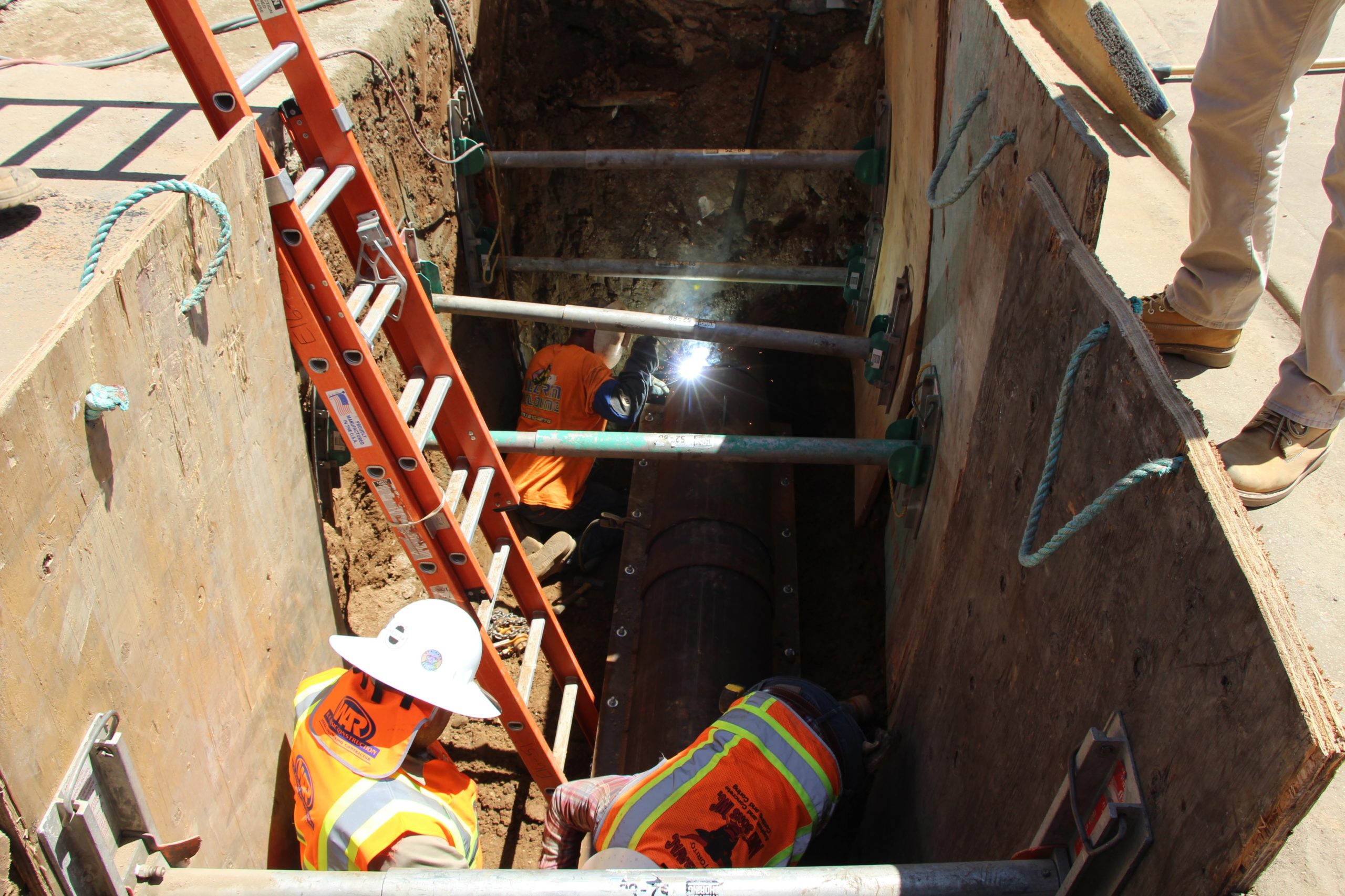
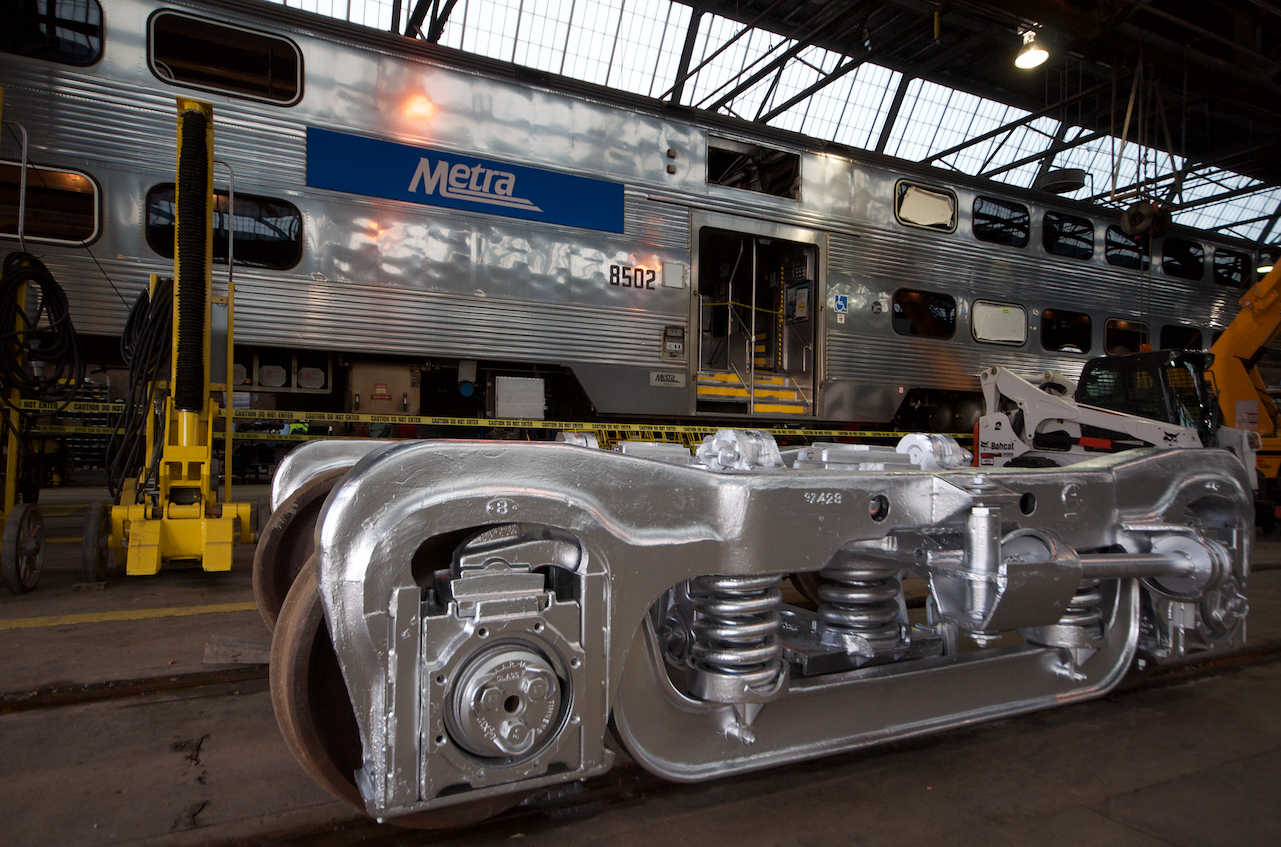
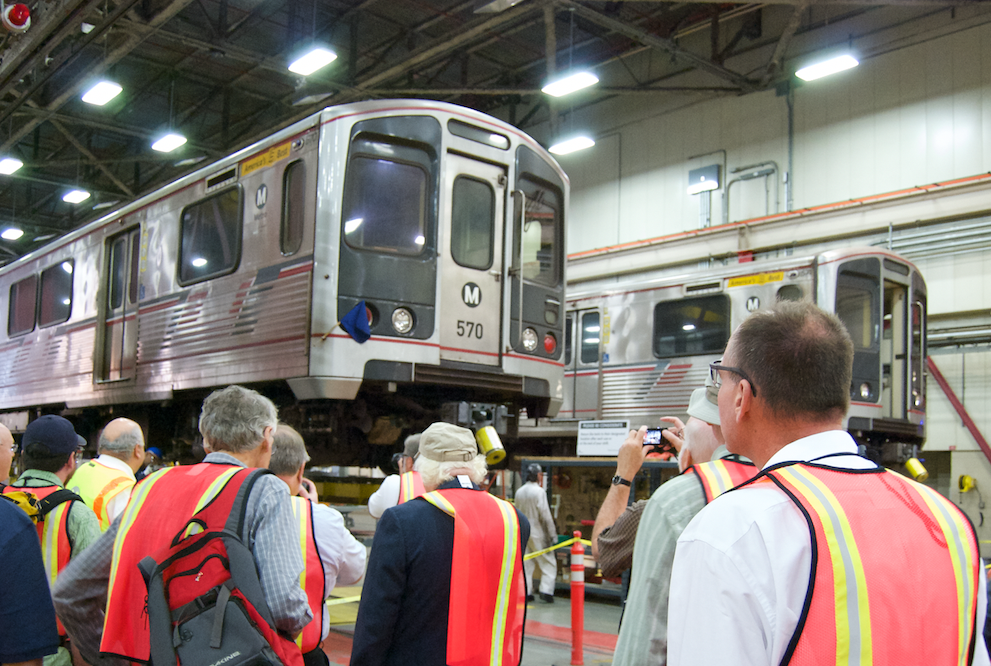
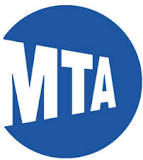


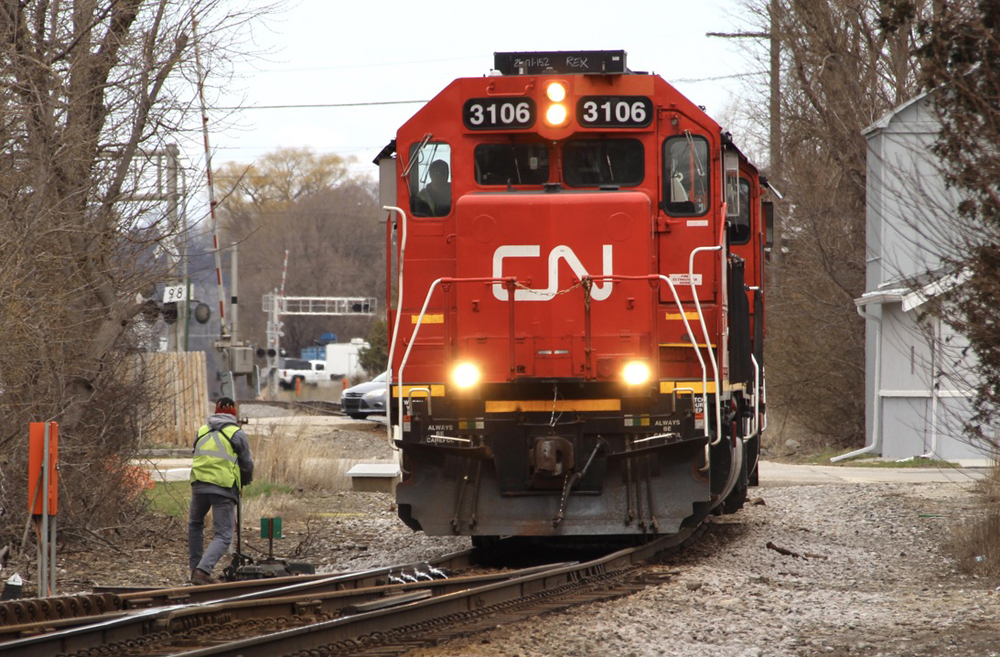
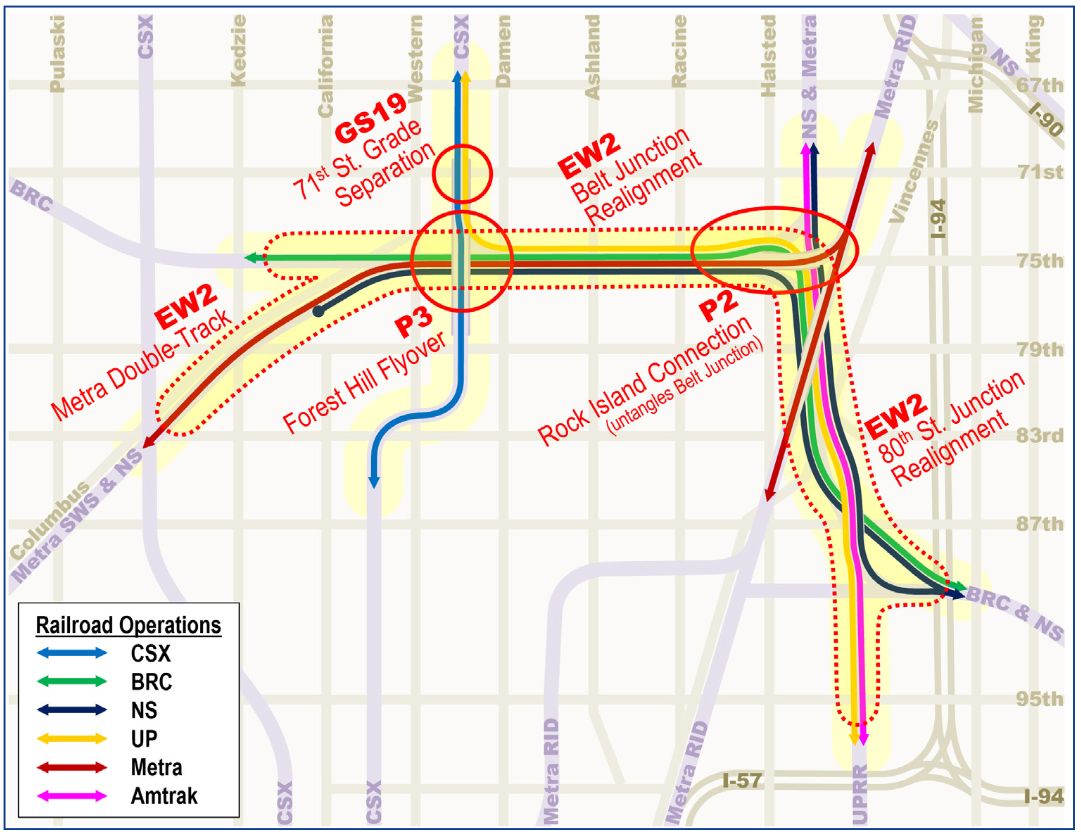
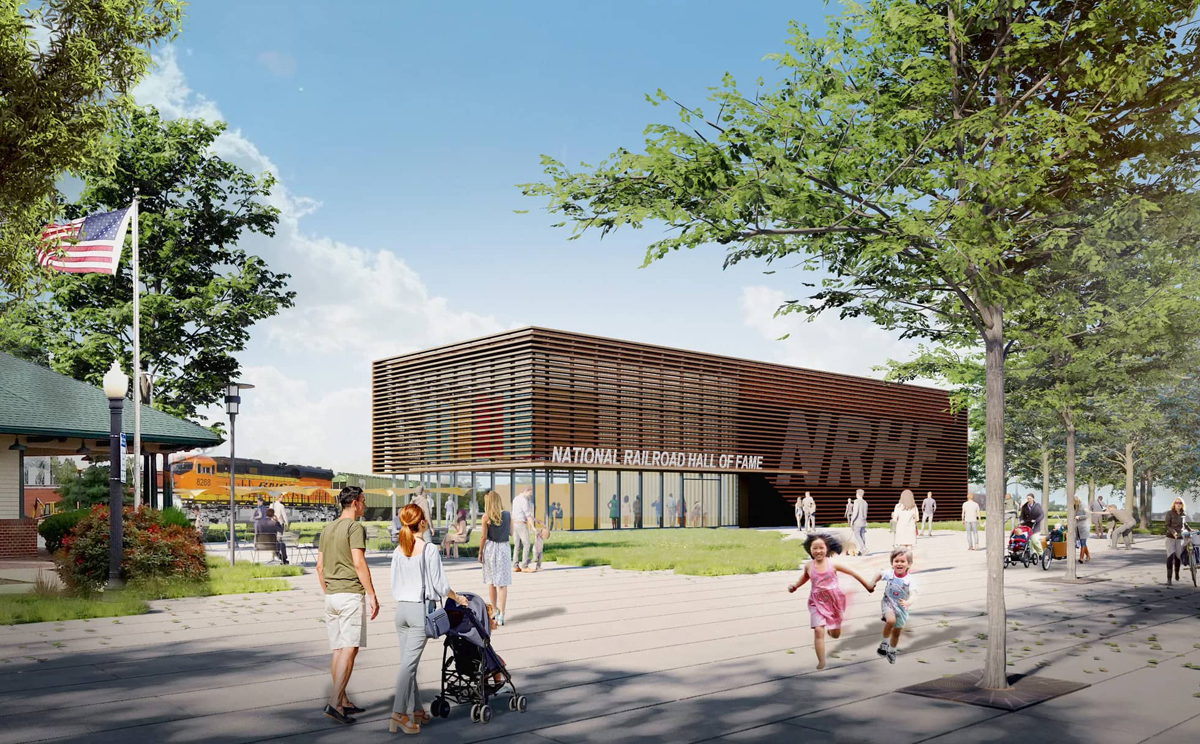




The main problem is not just too few transit dollars, it is too many demands on too little money period. Jerry Brown first version decades ago diverted billions of gas tax money approved by the voters for road use only in the 1920’s to transit systems. It is nice to see diesel guzzling articulated buses running on a 15 minute headway with an average of 1.3 passengers in San Leandro Ca. .How much money s being wasted on running trains, streetcars and buses that are not being used? How much money would be freed up by cutting underused service?
Having returned from a trip to Switzerland and living a mile from the end of a NJ Transit commuter line to North New Jersey and the City of New York the most apparent item that jumps out is that the system used in this case Switzerland is passenger friendly, if the train is running over a Minute late and yes that is one minute the system makes an in car statement and if needed an estimated time to normal.
The trains are frequent and the equipment is clean, and they are passenger dedicated.
On the other hand is NJ Transit while there have been some improvements an increase in some service you still in the case of the North Jersey Coast Line have to ride from Bay Head to Long Branch and at that point change trains. If the Bay Head train is held up the New York connection departs and this also works in reverse. You are now sitting at the change point. What is more interesting is the system has dual fuel locomotives equipped to run over head wire of diesel and most of the time the shuttle for lack of a better term has a dual fuel engine. Years ago there was no changing of trains, and some went all the way to Penn Station NY, and that system did run better.
We have had visitors come down on the train and arrive hours later or worse miss the connection going back when the connection is late, the end results once you are caught it is usually your last time riding the train. Those that do stay the course leave in the afternoon heading back.
Fifty years ago this route would run to Newark and make it in an hour and a half, today you are looking at two hours. Years ago a railroader would tell you that you have to work on a railroad to learn how to run one, it is not something you pick up is school.
In NYS all the money that is collect by the MTA doesn’t go to the MTA. Their new chairmen said we only get about 28%. No one knows what happens to the rest.
These issues need to be hammered out. They also need to be collected so we can look at the whole picture. We’re doing the first part well, the second part not so much, but this series of articles are helping, and that’s great.
In the transit debate, one thing should be clear. It takes density of pupulation, and a lot of it, before transit becomes even remotely viable, and even then it requires considerable government involvement in terms of finances, in both construction and operation, that simple farebox revenue doesn’t cover.
For those of us who love trains, wouldn’t it be nice if the farebox did in fact cover the entire cost? That would eliminate a huge amount of all this “is it worth it” discussion. There would be no question it is worth it.
I am therefore offering a challenge with no prize except the one thing we all (or most of us I hope) want: better rail transit. Come up with a model that actually covers its own expenses and provides the benefits we all know rail can provide if “done right.” To that end, and for more details, please respond to my comments. I’ll try to watch for them, and if allowable, I’ll post a link by which you can contact me.
If you wanted to fly from DTW to Toledo , you’d probably find yourself going via Atlanta! again, flights for long distance , trains for short. nobody is arguing that long distance Amtrak competes with air, so not much point bringing up examples.
DAVID – Is there a typical flight out of DTW? Well my own was to MKE Milwaukee (theoretically one of Amtrak’s more feasible routings), a trip I have made many times by all modes, rail, air and driving. This time I flew. One can get direct from DTW or even nonstop from DTW to anywhere from Seoul to Mexico City to Phoenix to Amsterdam. What would be the typical flight out of DTW? If there’s such a thing I’d say Atlanta. Connecting two of Delta’s mega-hubs, the DTW mega-hub inherited from Northwest. (Or Republic before that).
So what would a train from Detroit (or Ann Arbor) to Atlanta look like? Measure it in days, not hours. I don’t think Atlanta was invented when our national rail lines were laid out. Rail-wise it’s as if Georgia and Michigan were still fighting the Civil War.
Within the last month I’ve seen both these mega-hubs (I was on Southwest to ATL but saw miles of Delta out the window). Now DAVID turn to pages 14 – 15 of the July 2019 issue of TRAINS-MAG, read the article and specifically scan the photo and the caption on the second of those two pages. Try to think what Amtrak would look like in Atlanta if it diverted even a single-digit percentage of ATL’s air traffic.
Our problem DAVID is that not only is our rail infrastructure unfriendly to passenger trains, it’s changed a whole lot for the worse since Richard Nixon created Amtrak. Just as Delta’s two airports resemble each other in the gargantuantude, so do Amtrak’s two stations resemble each other in their pathos.
Charles, not overly familiar with DTW, but I would assume a decent number of those flights are to Chicago. High speed rail to there would take at least 50 % of the patronage. Toledo to close for air , but would take car/bus patronage. draw a circle 500 miles or more around Detroit, and any of that could be air competitive( obviously the lakes rule out some of those destinations). But Chicago is the obvious starting point, what speed is competitive? Under 4 hours , peferable 2-3.
Robert, likewise, (population 3000, live 5 miles out of town), but I would love to have more public transport available. Would never be to my door, other than a van type service for the sick/ elderly. Was in the big smoke today , and just thought , you poor beggars , traffic drives me crazy. We bank on it taking less than 10 minutes to drop off the kids at school and get to work.
Herb, of course cities such as New York could not exist without railways . Road simply could not move that amount of people.Same with London , Tokyo, Paris etc. Mr Landey compares rail in car centric areas trying to compete with a freeway, but ignores cities such as New York.
But what happens when a city like Los Angeles doubles its population? Sooner or later rail becomes the answer.
To Mr. Landey’s remarks that rail doesn’t move many people. Perhaps I’m in la-la land but I seem to recall, as a youngster, taking the overnight train from Buffalo Central station (NYC) and arriving in Manhattan the next morning. We then proceeded to the Long Island RR terminal and took the train to Baldwin. There was power change en route–don’t recall exactly where or what after sixty four years but I believe it switched from electric to steam, or perhaps diesel. Both trains were packed. Then, as now, the LIRR was indispensable to moving people to and from Manhattan. The impact was clearest during the occasional strike.
Several times, while stationed at Great Lakes, Illinois, I rode the C&NW to Milwaukee and Chicago on the push-pull service. They were well patronized even during off peak hours. Japan was a case study in the indispensability of a densely populated mega-city on both the JNR and the private lines radiating from Tokyo. There was no earthly way the demand could be met by road transport.
After going to work for PG&E in San Francisco, I found the N Judah PCC part of the Muni indispensable to get to and from downtown. Parking was inconvenient and very expensive.That was also very well patronize
d.
While working in Frankfurt, Hessen Germany, I usually drove to work but only because public transit didn’t come close enough to my workplace to be feasable. We occassionally used the DB to get downtown and then used the U-bahn and strassenbahn to getmaround the inner city with its restrticted parking and confusing traffic patterns.
My daughter lives in Pittsburgh which once had a tremendous commuter service, all now extinct. I-376 is a crazy replacement. If you try it, make sure you’ve taken your blood pressure meds. You’ll need’em.
Does commuter rail cost. Yes. Does it cost more than it should? Unquestionably. Gold-plating anything will make unreasonable demands on costs. Gov’t seems to have an absolute genius for creating complication and expense and delay. No answer to that one.
To Mr. Landey’s comments about rail efficiency (or even relevance), I think a distinction needs to be made between local, regional and inter-city services. Rail has its place in the first two but , in this country, is questionable for the latter. The country has developed for a century as a car-centric structure in most locales with low population densities aplenty. Trying to insert a viable mass transit system into such a structure is an exercise in futility. Boutique transit, such as street-cars on public streets is more an exercise in costly feel-good than effective transportation. That argument was decided over 60 years ago when rail-based lost. Resurrecting it wont change its utility in any degree. Where rail-based shines is when it has a dedicated right of way, preferably grade-separated from street intersections in congested urban areas. The Insull roads radiating from Chicago–the C,A &E, the C,NS&M and the C,SS&SB, only the latter of which still exists, are a case in point. They were way ahead of their time but were hobbled by gov’t in difference and too much street running.
An interesting use of rail based transit is metro Toronto. The Canadians seem to have gotten their act together. The system isn’t cheap but it does work for the most part. What I find troubling is that 100 to 120 years ago, from Boston to San Diego, from Miami to Seattle, private companies covered much of the nation with fast, affordable useful rail-based transit. In the subsequent rush to the highway, far too much was left at the road side. Perhaps BART is the obvious exemplar of this. Five years after the KEY system folded up in 1958, BART was approved. I can’t think of a better example of gov’t failure.
One area I think we’re really negligent with is Amtrak hibernation during winter storms. Major metro areas in the northeast and mid-west shouldn’t come to a screeching halt because of snowwstorms. Would it cost to turn out Amtrak to help? Yes. Would itbe worthit? I think so.
DAVID BENTON and HERB WILDMAN – Sorry if I was unclear in my posts. Actually I am pro–rail and if you read my post (below) of a couple of days back I believe I have established my pro-rail credentials. Yes you are correct. Trains move a lot of people, and I’m one of those people. But not enough people to make a dent in the number of lanes needed on the highways, which move far more people.
Rail provides an ALTERNATIVE to driving for those who can’t drive or don’t wish to drive. Rail doesn’t measurably reduce highway congestion – the effect is negligible. Actually rail INCREASES highway congestion at the terminals (as does air transport – even more so). If you want to see auto fuel wastage, auto gridlock and auto emissions, visit a park-ride at a suburban rail terminal. (Or an airport.)
I repeat my challenge: tell me what a rail system would look like that would measurably lessen the number of gates (78) in the “A” concourse of the McNamara Terminal at DTW Airport, Romulus Michigan.
And my other challenge in previous posts over the months: if Amtrak were to double or to triple or to quadruple, what would it look like, what service would it offer, at places like Nashville or Las Vegas or Columbus, where there is no service, or MSP where there is next to none.
Rail has its place for sure. The problem with the DTW airport is that it’s in Romulus, meaning everyone has to drive I-94 to Romulus to get to all those hundreds of airplanes. If you were to calculate to center of population in the Detroit metro census area, as a guess it might be somewhere around the border of Detroit with the northern suburbs (say, near Eight Mile and Woodward), a schlep from the airport. In contrast, Amtrak calls at Pontiac, Troy/ Birmingham, Royal Oak, Detroit New Center, Dearborn and Ann Arbor, lessening the drive and diffusing the congestion.
I am sure glad that I live in a rural area that has no public transportation. Nor do we want any. We own cars and we like to drive them. The only way I ever get anywhere locally is either by car or on foot.
Illinois has a large abundance of oil in the southern and southeastern part of the state. But they passed the most draconian fracking laws in the country in the name of environmentalism, but at the same time reduced taxes on the strip mining of high sulfur coal throughout the state, (which they and Indiana have a large abundance of) which is fraught with more environmental issues, but has a much stronger lobby in Springfield.
Illinois could easily raise revenue if they allowed fracking in the state to come in at a much less restricted pace. As it stands today, they borrow and borrow while they let the cash sit in the ground.
DAVID Yes of course roads and airports need capital and maintenance. So the first pat of your post is valid. The last sentence in your post is a good try but really isn’t true. Transit provides an alternative to roads but the diversion from road to transit is so small – negligible – that the reduction in road spending does not occur.
Do the math, David. Look at the traffic count on an urban freeway lane and look at the passenger count on a parallel fixed rail route.
Charles , that airport , and those highways need no maintenance?
Air has it s place, roads have their place, but so does rail . Every new rail line has to prove its worth to get funded, usually that is by showing the reduction in road spending the railway will enable.
This is likely a dumb idea that won’t generate much funds, but maybe start a “Go fund Me” page, mostly to see public response.The $$ generated likely won’t do much, but if a few hundred/thousand citizens giving $5.00 or whatever, might show public interest. Something like this could equal spending a “zillion” dollars on some funded “study committee.” i don’t live anywhere’s near there, but I’d put in 5 bucks; likely more if I lived there. If lots of people gave something, even if small, it sure would show public interest.
For all those Forum Posters who criticize the cost of highway projects, read the above cost estimates to MAINTAIN, NOT TO EXPAND, transit. Hey I’m all for transit. I’ve ridden every sort of bus, train, trolley, tram, subway, suburban train, and intercity train, in cities all across America and in three other nations. But don’t pretend the cost is reasonable or affordable. It isn’t.
Now on to that Congresswoman from Bronx (I won’t insult America’s bartenders by giving her other popular title). She wants to build high-speed rail nationwide to replace airplanes. Nice thought, Ms. Cortez. What exactly would such a system look like? How much land would it take. How much concrete (which has an enormous energy content). How many dollars? And are you so sure that operating the trains would consume less energy than airplanes do? I’m not convinced. Look at the cost (and the elapsed time) of Cal-HSR and a few spot projects in Chicago CREATE. Then tell me what AOC’s train system would run into.
Last Saturday, as I waited for my airplane home to Milwaukee, I contemplated Detroit Metropolitan Wayne County Airport’s McNamara Terminal. Seventy-eight gates in McNamara’s “A” Concourse, which is only part of McNamara which is only part of DTW. I tried to imagine what a rail system out of Amtrak Detroit New Center (with its single platform) would look like that would replace the air transport system. Would any part of southern lower Michigan or northern Ohio or northern Indiana even still exist after Alexandria’s railroads were to be built?
It’s a complicated question why over my lifetime aviation and highways have become dominant and rail has sunk to a niche. There are many factors we could talk about for a very long time and not come up with all the answers. Fair enough. But I must post this: air transport and highways can move the people and do move the people. America’s railroads can not and do not.
Other forum members question my railfan credentials because I support (and regularly fly) air transport. Sorry folks I’m a three-way switch hitter: planes, trains and freeways. My rides last week on the Edsel B. Ford. Walter P. Chrysler, and Walter P. Reuther Freeways (and the Davison, John C. Lodge, and Detroit Industrial Freeways as well) got my blood going just as much as watching my favorite railroads. You guys got your obsolete steam engines. I got my favorite freeways.
Greetings from Southern California. The article got it right. If you want to support/improve local transit you need to generate funding locally. Good luck getting any significant increase in federal funds!